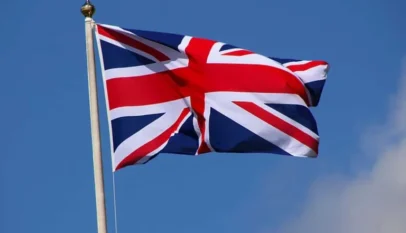
Why FG Must Enforce Graphic Health Warnings on all Tobacco Products
By Paul Ashibel
Tobacco consumption remains a significant global health challenge, with dire consequences for both individual users and society at large.
In combating this epidemic, one policy tool has emerged as a potent force for change: graphic health warnings.
These stark visual reminders of the dangers of tobacco use serve not only to inform but also to deter, making their implementation on tobacco products a critical step in public health initiatives.
Also, graphic health warnings have been shown to have a profound impact on consumer behaviour.
Research indicates that prominently displayed warnings on tobacco packaging not only increase knowledge about the health risks but also motivate smokers to contemplate quitting or reducing their tobacco intake.
By confronting users with the stark reality of the harm they inflict upon themselves, these warnings serve as a powerful catalyst for behaviour change, nudging individuals towards healthier choices and ultimately saving lives.
Tobacco products such as shisha, cigars and smokeless tobacco have often evaded the graphic health warnings requirements.
This enforcement gap not only undermines the effectiveness of public health efforts but also allows tobacco companies to continue marketing their products with impunity, targeting vulnerable populations, including youth and marginalized communities.
Section 20 of the National Tobacco Control Act stipulates that “every tobacco or tobacco products package shall contain in writing and graphics, every health warning signs prescribed in this Act or any other law which shall cover not less than 50% of the total surface area of the package.”
In June 2023, the rotational graphic health warning of a contrast image of healthy lungs (non-smoker’s lungs) and diseased lungs (smoker’s lungs) with the text warning “smoking causes lung cancer was phased out after two years, and at the same time, the Federal Ministry of Health approved an image of mouth cancer caused by tobacco use with the text warning reading “smoking causes mouth cancer”.
The tobacco industry is expected to comply with this provision on all tobacco products, including shisha, cigars and like products, not only on cigarettes where skeletal compliance has been recorded.
The fact is the tobacco industry knows that these health warnings work, and in many cases thwart the effectiveness of the policy by delaying compliance, using poor resolution images that do not meet approved standards, and avoiding its application on all tobacco products.
The warnings are effective because they speak a universal language, transcending barriers of literacy and language.
Through compelling imagery and minimal text, these warnings communicate the grave health risks associated with tobacco use in a manner that is easily understood by individuals across diverse cultures and educational backgrounds.
Whether it’s a photograph depicting diseased lungs or a graphic illustration of the impact on oral health, these visuals leave a lasting impression, fostering greater awareness and understanding of the hazards of tobacco consumption.
There is no justifiable reason to why there are still tobacco products in the Nigerian market not complying with the approved set of pictorial and text warnings.
Between June 2023 and November 2023, the tobacco industry as provided by the Act had 150 days to sell tobacco products with the old warnings alongside those with the new warnings, after which every tobacco product sold without the new warnings and messages would be in violation.
The Act stipulates that non-compliant products are to be seized, and other penalties meted on the sellers.
A survey conducted by the Nigeria Tobacco Control Alliance at the end of the 150-day moratorium period showed that while there was some compliance on cigarette packs, other tobacco products had almost zero compliance to the policy.
Accordingly, all tobacco products currently being sold without the approved health warnings are sold under direct violation of the provisions of the National Tobacco Control Act, and the relevant agencies of government; Standards Organization of Nigeria, Federal Competition and Consumer Protection Commission, the Nigeria Police Force, National Security and Civil Defence Corps, etc., must step up to their responsibility of enforcing the graphic health warnings policy on all tobacco products as required by law.
Paul Ashibel works with the Nigeria Tobacco Control Alliance and writes from Abuja.








